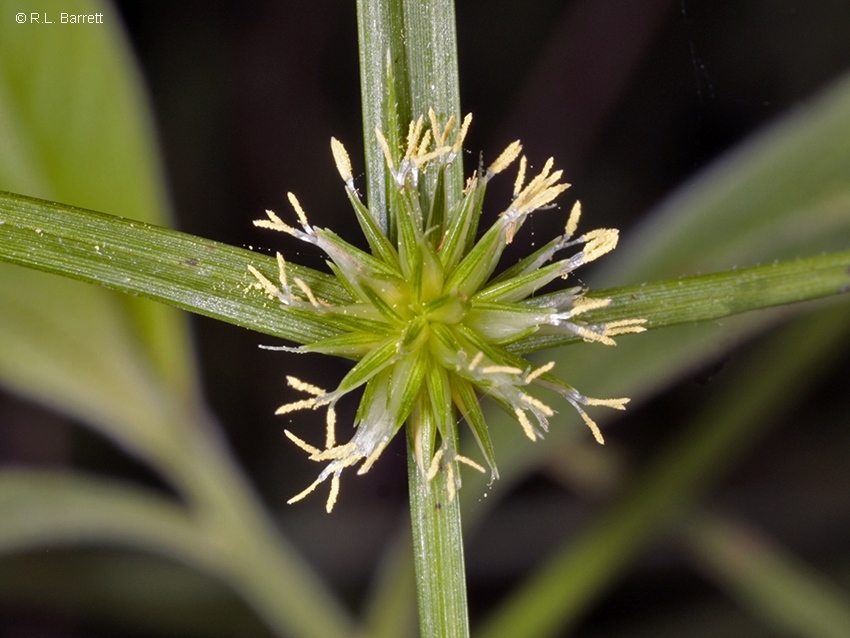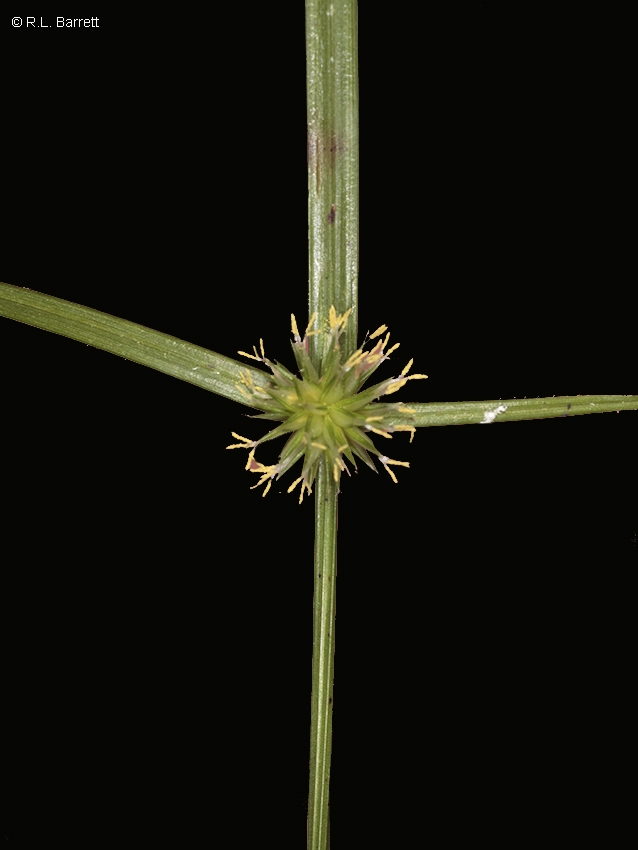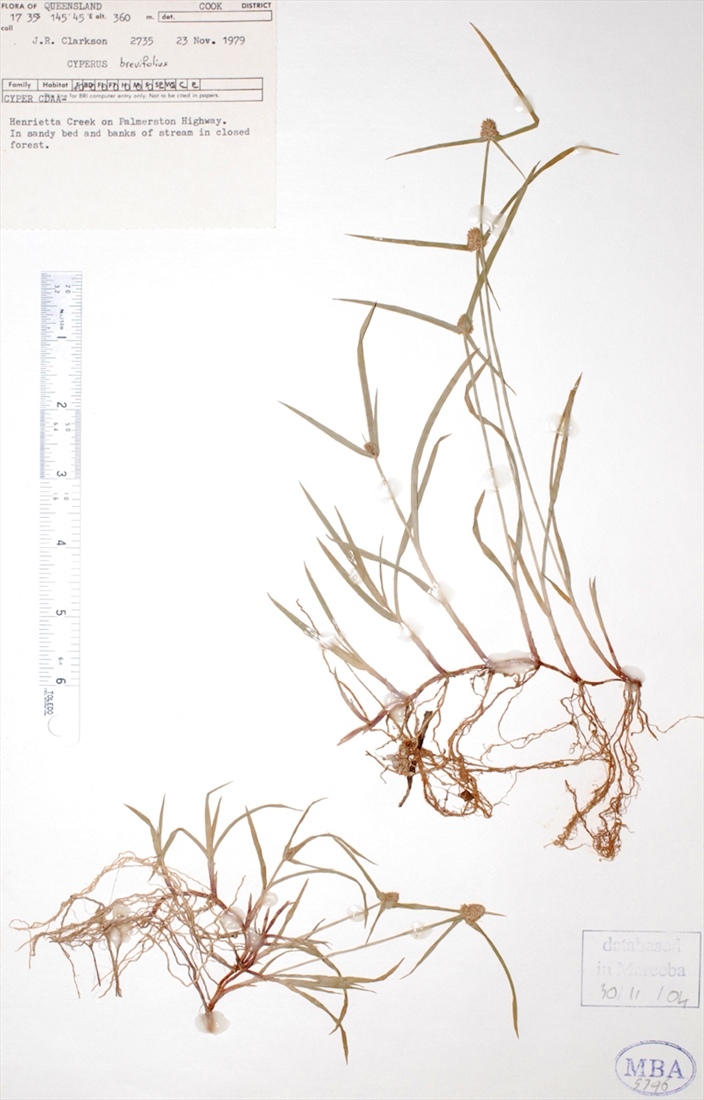Australian Tropical Rainforest Plants - Online edition
Cyperus brevifolius (Rottb.) Endl. ex Hassk.



Hasskarl, J.C. (1844) Catalogus Plantarum in Horto Botanico Bogoriensi Cultarum Alter 1844: 24.
Kyllinga; Mullimbimby Couch
Perennial with creeping rhizome which are slender and covered in reddish brown sheaths. Stems triquetrous, up to 40 cm tall, compressed and smooth.
Leaves shorter to as long as the culms, V-shaped (canaliculate) in cross-section, 1-3 mm wide.
Inflorescences capitate; the 3 inflorescence bracts (2 long + 1 short) are leaf-like and spreading upwards. Spikes ovoid, 6-7 x 6-8 mm; spikelets compressed about 3 x 1 mm, 1-flowered. Glumes with green denticulate keel.
Nut yellowish brown, obovoid, biconvex, apiculate; half the length of the glume; testa very smooth.
Features not available.
A naturalised species that occurs in WA, NT, CYP, NEQ, CEQ and wideaspread througth south eastern and southern Australia. Altitudinal range from near sea level to 810 m. Grows in rainforest, Eucalypt forest and on grassy slopes. Also occurs throughout the tropical and warm temperate regions of the world.
Can become a pioneer plant in disturbed areas especially along roads (Clarkson 5090).
A weed of cultivation and agriculture (Wilson 1993).





